-
ARTÍCULO ORIGINAL16/12/2024
Editorial discourses in the history of Acta Paulista de Enfermagem (1988-2017)
Revista Brasileira de Enfermagem. 2024;77(6):e20230362
Resumen
ARTÍCULO ORIGINALEditorial discourses in the history of Acta Paulista de Enfermagem (1988-2017)
Revista Brasileira de Enfermagem. 2024;77(6):e20230362
DOI 10.1590/0034-7167-2023-0362
Visualizações0Ver maisABSTRACT
Objectives:
to analyze the editorial discourses of Acta Paulista de Enfermagem from 1988 to 2017.
Methods:
qualitative, historical, oral research, with interviews with the journal’s editors. Statements were categorized and presented in three decades, discussed from Foucault’s archaeological perspective.
Results:
seven statements presented three discourses. In the first decade, the discourse of knowledge registration and circulation presented statements of graduate studies and professional recognition. In the second decade, knowledge internationalization was added, with statements of business and editorial panopticism, selection criteria, indexing and digitalization. Finally, the discourse of shifting scientific assessment centrality was added with statements of preprint, open science, exclusive digitalization and mediatization of science.
Final Considerations:
the journal needed to adapt to form its official discourse, which made it possible, over the years, to change its initial peripheral position to a central one within scientific communication, supporting its panoptic role.
-
ARTÍCULO DE REVISIÓN16/12/2024
Strategies for expanding vaccination coverage in children in Brazil: systematic literature review
Revista Brasileira de Enfermagem. 2024;77(6):e20230343
Resumen
ARTÍCULO DE REVISIÓNStrategies for expanding vaccination coverage in children in Brazil: systematic literature review
Revista Brasileira de Enfermagem. 2024;77(6):e20230343
DOI 10.1590/0034-7167-2023-0343
Visualizações1Ver maisABSTRACT
Objectives:
to identify the strategies found in the literature for increasing vaccination coverage among children in Brazil. It is justified mainly by the current scenario of falling vaccination coverage.
Methods:
systematic literature review. The search was carried out in the Pubmed (MEDLINE), Embase and Scopus databases, following the PRISMA guidelines.
Results:
initially, 4,824 results were returned. In the end, 6 studies were included for narrative synthesis using the SWiM methodology. Of these, 50% dealt with studies related to the Bolsa Família Program (PBF). The others explored strategies for approaching parents directly, Rapid Vaccination Monitoring (MRV) and the Community Health Agents Program (PACS). The PBF did not guarantee compliance with the conditionality of keeping vaccinations up to date. The MRV and PACS are effective strategies, especially because they allow active search for absentees.
Conclusions:
we conclude that more publications are needed on strategies to increase vaccination coverage among children in Brazil.

-
ARTÍCULO ORIGINAL16/12/2024
Educational technology to empower patients as participants in their care
Revista Brasileira de Enfermagem. 2024;77(6):e20230359
Resumen
ARTÍCULO ORIGINALEducational technology to empower patients as participants in their care
Revista Brasileira de Enfermagem. 2024;77(6):e20230359
DOI 10.1590/0034-7167-2023-0359
Visualizações0Ver maisABSTRACT
Objectives:
to build and validate an educational technology to empower patients as participants in their own care.
Methods:
methodological study to develop an educational technology based on the elaboration, validation, and evaluation that were carried out in five stages at a teaching hospital in Amazonas. The study was carried out from 2019 to 2022, with the participation of 19 judges specialized in patient safety and 72 patients admitted to the hospital’s medical and surgical clinics, the study setting.
Results:
the agreement between the judges obtained an overall index of 0.85, being considered validated. The overall analysis of the booklet obtained an assessment of the level of agreement above 85%.
Final Considerations:
the educational technology presented here was validated and suitable for promoting patient/professional rapprochement and consolidating health care in a way that increases the patient’s ability to contribute to their treatment and prevent the occurrence of adverse events.
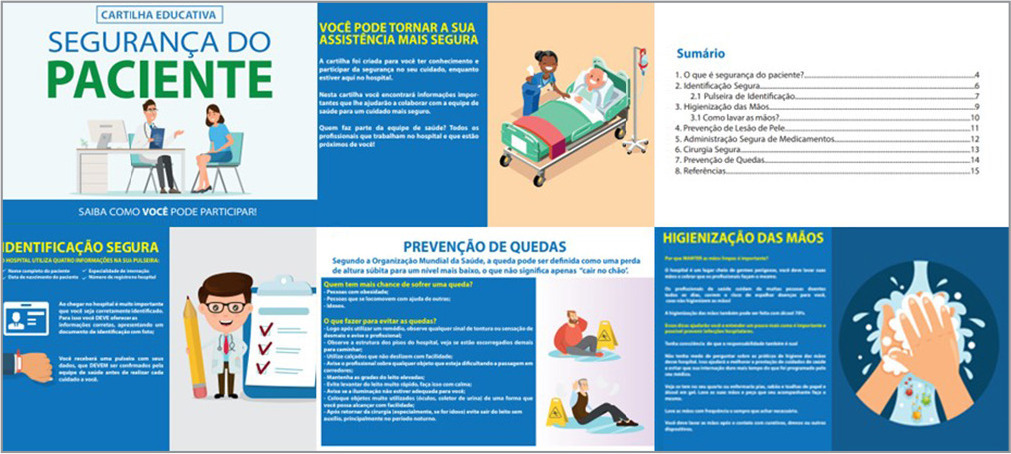
-
ARTÍCULO ORIGINAL13/12/2024
Educational booklet on labor and delivery: validity study
Revista Brasileira de Enfermagem. 2024;77(5):e20240138
Resumen
ARTÍCULO ORIGINALEducational booklet on labor and delivery: validity study
Revista Brasileira de Enfermagem. 2024;77(5):e20240138
DOI 10.1590/0034-7167-2024-0138
Visualizações2Ver maisABSTRACT
Objectives:
to develop and validate an educational booklet on labor and delivery for pregnant women.
Methods:
this methodological study involved constructing and validating a booklet based on Echer’s framework. We used the Content Validity Index and Cronbach’s alpha for content and face validation, selecting judges according to Fering’s criteria. We then conducted a clinical validation with the target population.
Results:
the booklet, developed based on evidence from an integrative review and validated by judges and the target audience, achieved global Content Validity Index of 0.919 and 0.913, respectively. After clinical validation with 22 pregnant women, it included 28 topics and 48 pages, with illustrations by a graphic designer.
Conclusions:
expert judges and the target audience considered this educational technology valid, deeming it a relevant tool for promoting the health of pregnant women.
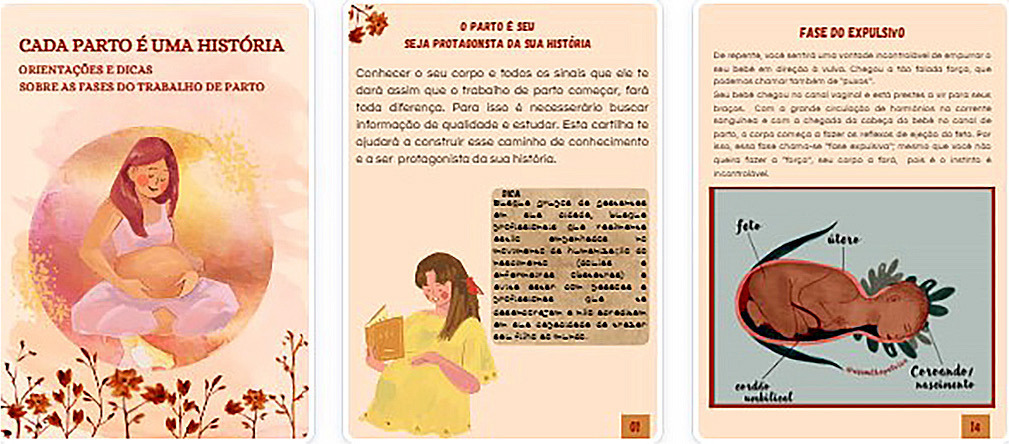
-
ARTÍCULO ORIGINAL13/12/2024
Interobserver agreement in Reception and Risk Stratification in Obstetrics implementation
Revista Brasileira de Enfermagem. 2024;77(5):e20230361
Resumen
ARTÍCULO ORIGINALInterobserver agreement in Reception and Risk Stratification in Obstetrics implementation
Revista Brasileira de Enfermagem. 2024;77(5):e20230361
DOI 10.1590/0034-7167-2023-0361
Visualizações0Ver maisABSTRACT
Objectives:
to analyze interobserver agreement in the Reception and Risk Stratification in Obstetrics protocol implementation.
Methods:
a cross-sectional study carried out during Reception and Risk Stratification in Obstetrics implementation, conducted in a tertiary hospital in southern Brazil with 891 participants in January 2020. Descriptive and interobserver agreement analysis was carried out using the Kappa coefficient in the risk stratification assigned by the triage nurse and reviewed by the researcher.
Results:
around half of the calls (55.6%) were stratified as not very urgent (green), followed by urgent (yellow) (31.8%), very urgent (orange) (9.3%), not urgent (blue) (3.4%) and no emerging stratification (red). Agreement analysis of revised stratification found Kappa values of 0.20 (blue), 0.54 (green), 0.77 (yellow) and 0.80 (orange).
Conclusions:
most appointments were non-urgent. The agreement analysis between the revised and assigned risk stratification revealed greater interobserver agreement as the priority level increased.
-
13/12/2024
Training of Brazilian indigenous nurses: between human rights, valuing diversity and inclusion
Revista Brasileira de Enfermagem. 2024;77(5):e20230430
Resumen
Training of Brazilian indigenous nurses: between human rights, valuing diversity and inclusion
Revista Brasileira de Enfermagem. 2024;77(5):e20230430
DOI 10.1590/0034-7167-2023-0430
Visualizações0Ver maisABSTRACT
Objectives:
to analyze the possibilities and potential of training indigenous nurses, given the Brazilian Health System (SUS), understanding the relationships between education and health.
Methods:
theoretical-reflective study, based on scientific literature, aligned with the experience, critical thinking of its authors and the Sustainable Development Goals in Brazil.
Results:
this text articulates three axes: Potential for including indigenous students in nursing training; Paths to achieving equity through inclusion and retention policies for indigenous students at different levels; and Implications of this for the SUS and global health.
Final Considerations:
indigenous students, beneficiaries of affirmative actions, face challenges of inclusion and retention in public universities that directly impact their academic training. Added to this are the difficulties identified in basic education, professor training and implementation of permanence policies, with consequences for services and training at other levels.
-
ARTÍCULO ORIGINAL13/12/2024
Stress in nursing workers caring for people with COVID-19
Revista Brasileira de Enfermagem. 2024;77(5):e20230542
Resumen
ARTÍCULO ORIGINALStress in nursing workers caring for people with COVID-19
Revista Brasileira de Enfermagem. 2024;77(5):e20230542
DOI 10.1590/0034-7167-2023-0542
Visualizações1Ver maisABSTRACT
Objectives:
to analyze stress from the perspective of nursing workers caring for people with COVID-19 in a public hospital in the Recôncavo region of Bahia.
Methods:
this is an exploratory qualitative study, conducted through semi-structured interviews. The data were analyzed using word clouds, similarity trees, and content analysis.
Results:
nursing workers were exposed to stress while attending to patients with COVID-19. The reported stressors in the workplace included: work overload, lack of planning, speed in performing tasks, fatigue, lack of participation in decision-making, lack of support from management, technological changes, excessive responsibility without preparation, interpersonal conflicts, and professional undervaluation.
Conclusions:
exposure to these stressors leads to emotional exhaustion and demotivation, which were intensified during the COVID-19 pandemic.
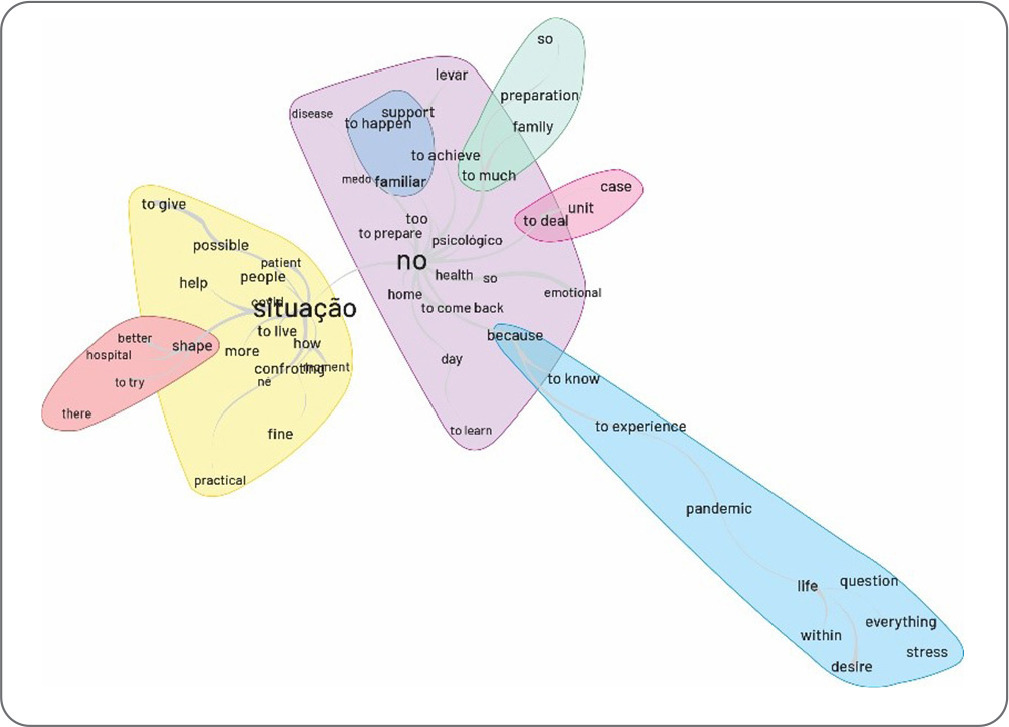
-
ARTÍCULO ORIGINAL13/12/2024
Adaptation and implementation of a Nursing care protocol for children in the Amazon Region
Revista Brasileira de Enfermagem. 2024;77(5):e20230245
Resumen
ARTÍCULO ORIGINALAdaptation and implementation of a Nursing care protocol for children in the Amazon Region
Revista Brasileira de Enfermagem. 2024;77(5):e20230245
DOI 10.1590/0034-7167-2023-0245
Visualizações0Ver maisABSTRACT
Objectives:
to describe the process of implementing an adapted protocol for pediatric nursing care in a health unit located in a municipality in the Amazon Region.
Methods:
methodological research conducted in a basic health unit with four family health teams in the state of Rondônia, involving seven nursing professionals. Data collection occurred between October 2020 and April 2022, following the research phases: situational diagnosis, exploratory phase, protocol definition, implementation, and evaluation.
Results:
the outcome was the adaptation and implementation of a nursing care protocol for children.
Final Considerations:
the adaptation and implementation process can be an effective approach to improving care, strengthening nursing as a profession with a solid foundation in scientific and clinical evidence. This facilitates early problem identification and appropriate guidance, leading to better health outcomes for children.
-
ARTÍCULO ORIGINAL13/12/2019
Uso de tecnologia móvel para o cuidado gestacional: avaliação do aplicativo GestAção
Revista Brasileira de Enfermagem. 2019;72:266-273
Resumen
ARTÍCULO ORIGINALUso de tecnologia móvel para o cuidado gestacional: avaliação do aplicativo GestAção
Revista Brasileira de Enfermagem. 2019;72:266-273
DOI 10.1590/0034-7167-2018-0641
Visualizações0RESUMO
Objetivo:
avaliar o aplicativo GestAção, com base na experiência de uso das gestantes.
Método:
estudo de natureza avaliativa, aplicada, metodológica, com abordagem quanti-qualitativa. A ferramenta tecnológica foi avaliada por 13 gestantes por meio de questionários para a caracterização do perfil sociodemográfico e o uso da escala de Likert, para calcular o Índice de Validade de Conteúdo (IVC) do aplicativo; e entrevista semiestruturada, com análise fundamentada na Semiótica.
Resultados:
o estudo evidenciou significativo nível de satisfação das gestantes com o uso do aplicativo, considerando os objetivos (IVC= 0,92), estrutura e apresentação (IVC= 0,86), e relevância (IVC= 0,92).
Considerações finais:
o aplicativo GestAção obteve IVC geral de 0,90, evidenciando-o como tecnologia facilitadora e coadjuvante no empoderamento das gestantes interessadas em obter conhecimentos sobre o período gravídico, mostrando-se uma potente ferramenta para qualificar as boas práticas na consulta de enfermagem.
Palavras-chave: Aplicativos MóveisCuidados de EnfermagemGestaçãoPromoção da SaúdeTecnologia em SaúdeVer mais -
ARTÍCULO ORIGINAL17/02/2020
Estresse ocupacional em profissionais de enfermagem de um hospital universitário
Revista Brasileira de Enfermagem. 2020;73(2):e20180997
Resumen
ARTÍCULO ORIGINALEstresse ocupacional em profissionais de enfermagem de um hospital universitário
Revista Brasileira de Enfermagem. 2020;73(2):e20180997
DOI 10.1590/0034-7167-2018-0997
Visualizações0RESUMO
Objetivos:
Identificar a presença de estresse ocupacional nos profissionais de enfermagem de um hospital universitário do interior de Minas Gerais e analisar a influência das características sociodemográficas e ocupacionais neste agravo.
Métodos:
Estudo transversal, exploratório e quantitativo, realizado com 124 profissionais de enfermagem de um hospital universitário do interior de Minas Gerais. Para sua efetivação, foi utilizada a versão adaptada e validada para o português da escala Job Stress Scale (JSS).
Resultados:
A maioria dos profissionais era mulheres (87,9 %), com média de idade de 40,2 anos, 80,6 % eram técnicos de enfermagem e 71,8% da amostra apresentava algum grau de exposição ao estresse ocupacional.
Conclusões:
O índice de estresse ocupacional foi superior ao observado em estudos anteriores. Os dados obtidos no estudo apontam para a necessidade de implementar medidas institucionais de prevenção ao estresse ocupacional, sobretudo fortalecendo o apoio social no trabalho.
Palavras-chave: Equipe de EnfermagemEstresse OcupacionalHospital UniversitárioProfissionais de EnfermagemSaúde do TrabalhadorVer mais -
REFLEXIÓN01/07/2020
Como traduzir o conhecimento científico à prática? Conceitos, modelos e aplicação
Revista Brasileira de Enfermagem. 2020;73(5):e20190179
Resumen
REFLEXIÓNComo traduzir o conhecimento científico à prática? Conceitos, modelos e aplicação
Revista Brasileira de Enfermagem. 2020;73(5):e20190179
DOI 10.1590/0034-7167-2019-0179
Visualizações0RESUMO
Objetivos:
apresentar o conceito de Tradução e Intercâmbio do Conhecimento tal como vem sendo utilizado na literatura internacional e, em particular, no Canadá. A seguir, descrever um renomado modelo conceitual para orientar a sua implementação, intitulado Ciclo do Conhecimento à Ação.
Resultados:
ilustramos a utilização do modelo no contexto do sistema municipal de atenção básica à saúde no sul do Brasil, na implementação de estratégias de manejo da dor durante a vacinação.
Conclusões:
nesta reflexão teórica, argumentamos sobre a importância de se traduzir o conhecimento científico aos diversos contextos de prática e criar oportunidades de intercâmbio com os usuários desse saber, como profissionais de saúde, gestores, formuladores de políticas públicas, pacientes, familiares e demais grupos de interesse, para promover equidade e qualidade dos cuidados no Sistema Único de Saúde.
Palavras-chave: Competência ClínicaDifusãoDisseminação de InformaçãoTradução do ConhecimentoTranslaçãoVer mais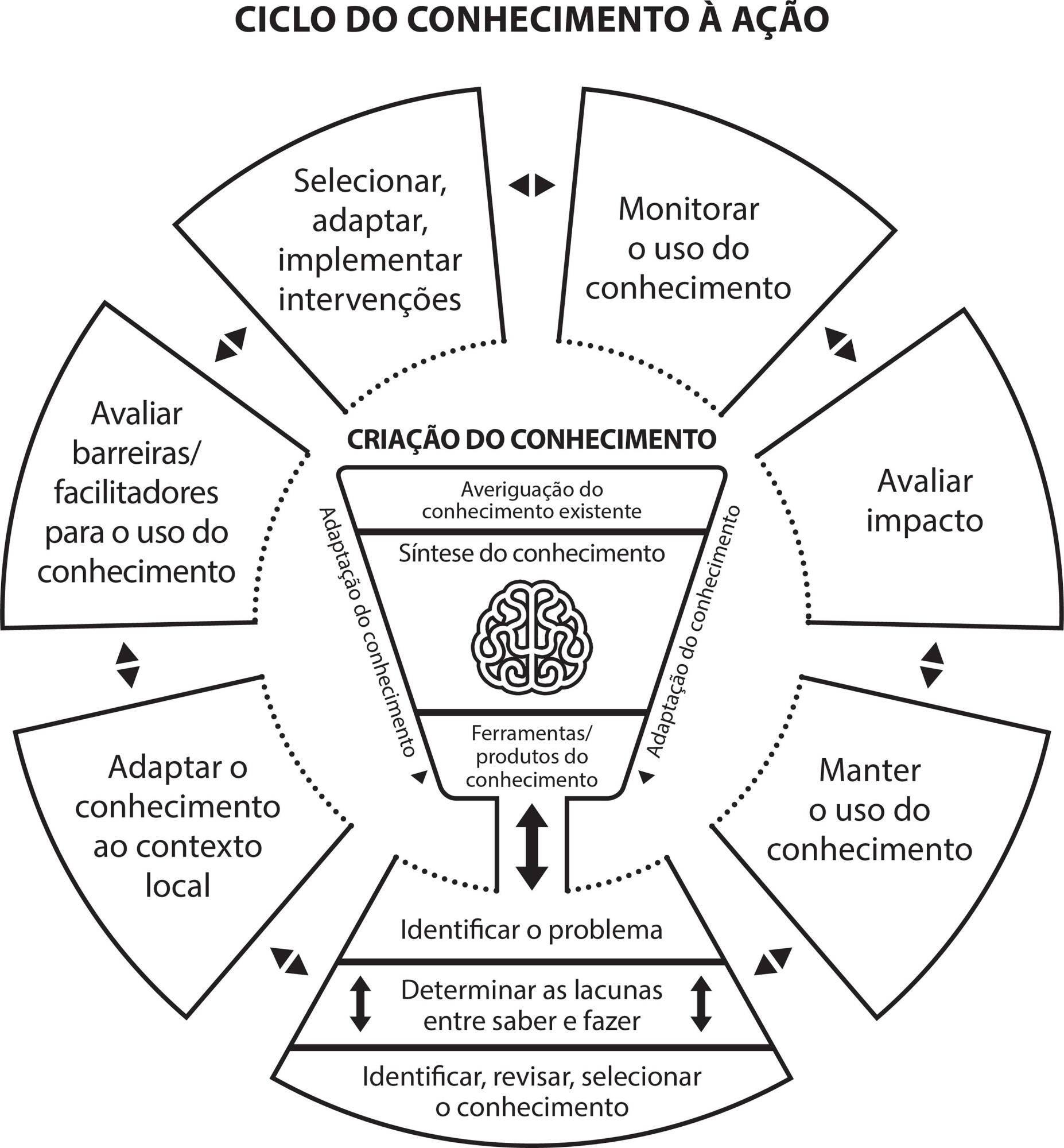
-
REFLEXIÓN05/03/2021
Trabalho do enfermeiro no contexto da pandemia de COVID-19
Revista Brasileira de Enfermagem. 2021;74:e20200594
Resumen
REFLEXIÓNTrabalho do enfermeiro no contexto da pandemia de COVID-19
Revista Brasileira de Enfermagem. 2021;74:e20200594
DOI 10.1590/0034-7167-2020-0594
Visualizações0Ver maisRESUMO
Objetivo:
Refletir sobre o trabalho experienciado pelo enfermeiro no enfrentamento da pandemia de COVID-19 vivenciado em um hospital público do estado do Rio Grande do Norte.
Métodos:
Ensaio reflexivo embasado na vivência profissional em um hospital público de referência para atendimento de pacientes acometidos pela COVID-19 no estado do Rio Grande do Norte. Os resultados foram organizados em duas categorias empíricas, que destacam as potencialidades e entraves do trabalho do enfermeiro diante da COVID-19, apresentados por meio do diagrama de Ishikawa.
Resultados:
Duas categorias emergiram das experiências vivenciadas: Protagonismo da enfermagem na organização dos serviços de saúde para o enfrentamento da COVID-19; e O exercício da gerência dos cuidados de enfermagem na pandemia de COVID-19.
Considerações finais:
Necessita-se valorizar o trabalho do enfermeiro em todos os seus atributos, bem como fortalecer os processos de trabalho interdisciplinares, que colaboram para a superação da crise ocasionada pela pandemia.
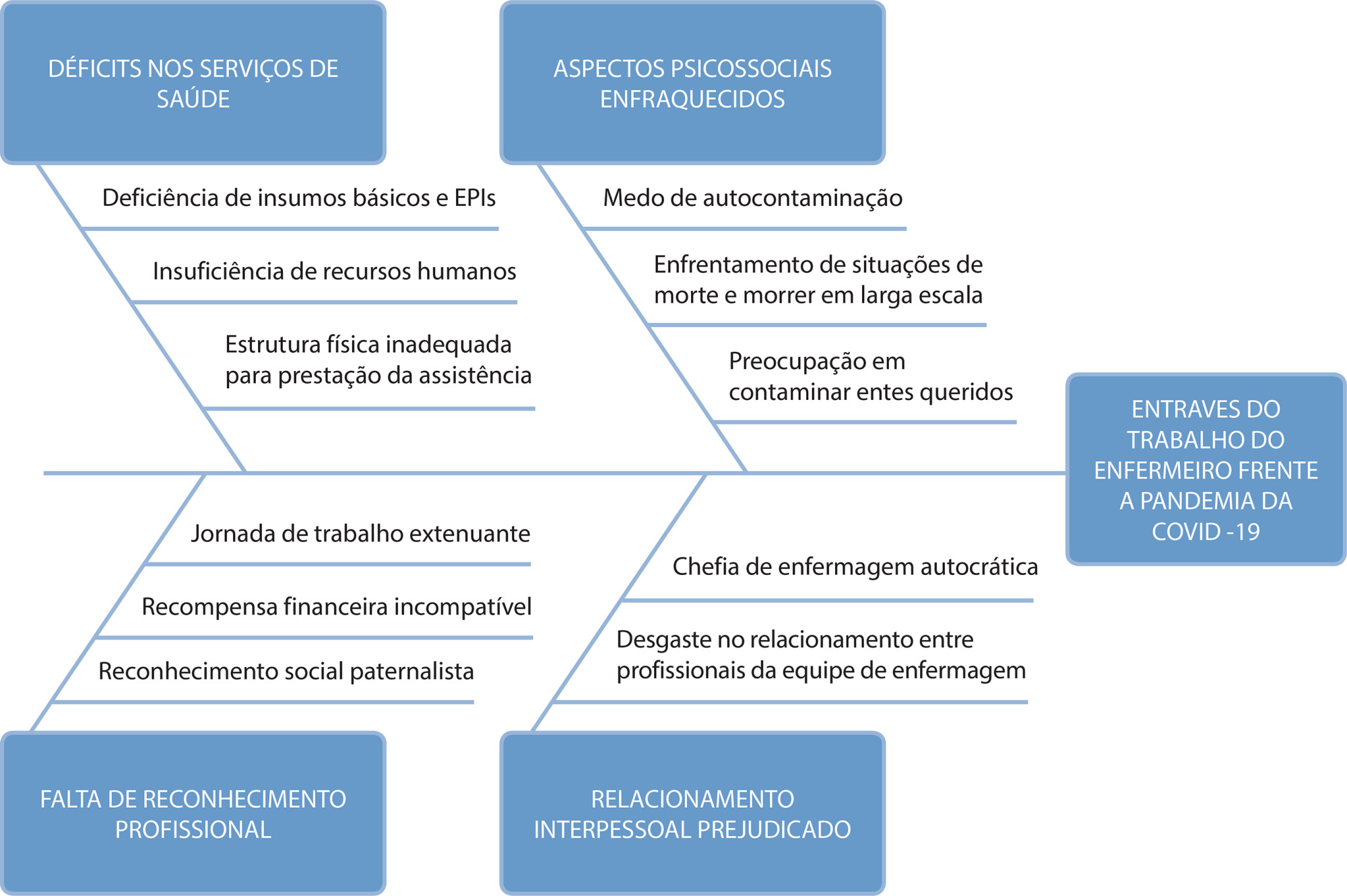
-
ARTÍCULO ORIGINAL08/07/2020
Construção e validação de protocolo assistencial de enfermagem com intervenções educativas para cuidadores familiares de idosos após Acidente Vascular Cerebral
Revista Brasileira de Enfermagem. 2020;73:e20180894
Resumen
ARTÍCULO ORIGINALConstrução e validação de protocolo assistencial de enfermagem com intervenções educativas para cuidadores familiares de idosos após Acidente Vascular Cerebral
Revista Brasileira de Enfermagem. 2020;73:e20180894
DOI 10.1590/0034-7167-2018-0894
Visualizações0Ver maisRESUMO
Objetivo:
construir e validar o conteúdo de um protocolo assistencial de enfermagem com intervenções educativas para cuidadores familiares de idosos após Acidente Vascular Cerebral.
Métodos:
estudo metodológico conduzido em três etapas: (1) construção do protocolo por meio de revisão da literatura; (2) pré-teste com equipe multiprofissional, analisado com articulação da literatura; (3) validação do protocolo pela Técnica Delphi.
Resultados:
o protocolo foi estruturado nos domínios: Orientações Sobre a Doença; Suporte Emocional; Utilização da Rede de Atenção à Saúde; Alimentação; Vias Aéreas; Medicações; Higiene; Cuidados com a Pele; Eliminações; Vestir/Despir; Posicionamento e Transferência; Prevenção de Quedas. No pré-teste, oito especialistas avaliaram a clareza e o conteúdo do protocolo. Na validação, houveram duas rodadas pela Técnica Delphi. O protocolo validado foi composto por 12 domínios contendo 42 itens e 240 orientações de cuidados.
Conclusão:
o protocolo qualifica a transição do cuidado após alta hospitalar auxiliando os enfermeiros na prática assistencial no domicílio.
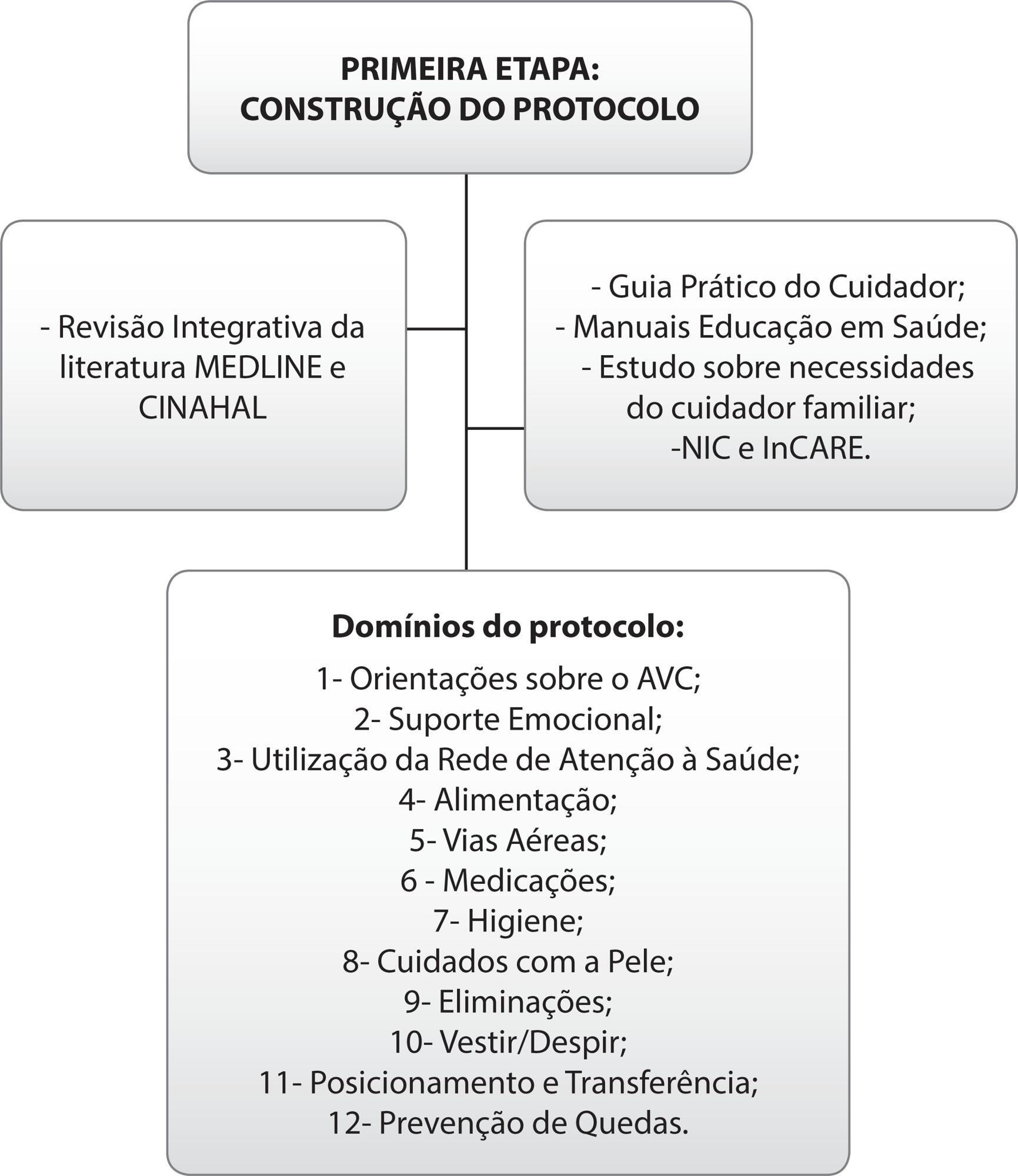
-
ARTÍCULO DE REVISIÓN22/04/2020
Polycyclic aromatic hydrocarbons and development of respiratory and cardiovascular diseases in workers
Revista Brasileira de Enfermagem. 2020;73(3):e20180965
Resumen
ARTÍCULO DE REVISIÓNPolycyclic aromatic hydrocarbons and development of respiratory and cardiovascular diseases in workers
Revista Brasileira de Enfermagem. 2020;73(3):e20180965
DOI 10.1590/0034-7167-2018-0965
Visualizações0Ver maisABSTRACT
Objectives:
to identify the scientific evidence on the development of cardiovascular and respiratory diseases due to workplace contamination by polycyclic aromatic hydrocarbons.
Methods:
integrative literature review. The search for primary articles was held in October 2017 in the Medical Literature Analysis and Retrieval System Online (through Pubmed), Web of Science and Latin American and Caribbean Literature in Health Sciences (LILACS).
Results:
the 16 studies analyzed showed that exposure to polycyclic aromatic hydrocarbons was associated with cardiovascular diseases, such as increased blood pressure, heart rate variation, and ischemic heart disease; and respiratory disorders, such as decreased lung function, chronic obstructive pulmonary disease, asthma, wheeze, coughing, pulmonary wheezing, chest tightness, effort dyspnea, and sore throat.
Conclusions:
polycyclic aromatic hydrocarbons cause deleterious effects on the cardiovascular and respiratory systems through mutations and cellular inflammation, being a risk to exposed individuals.
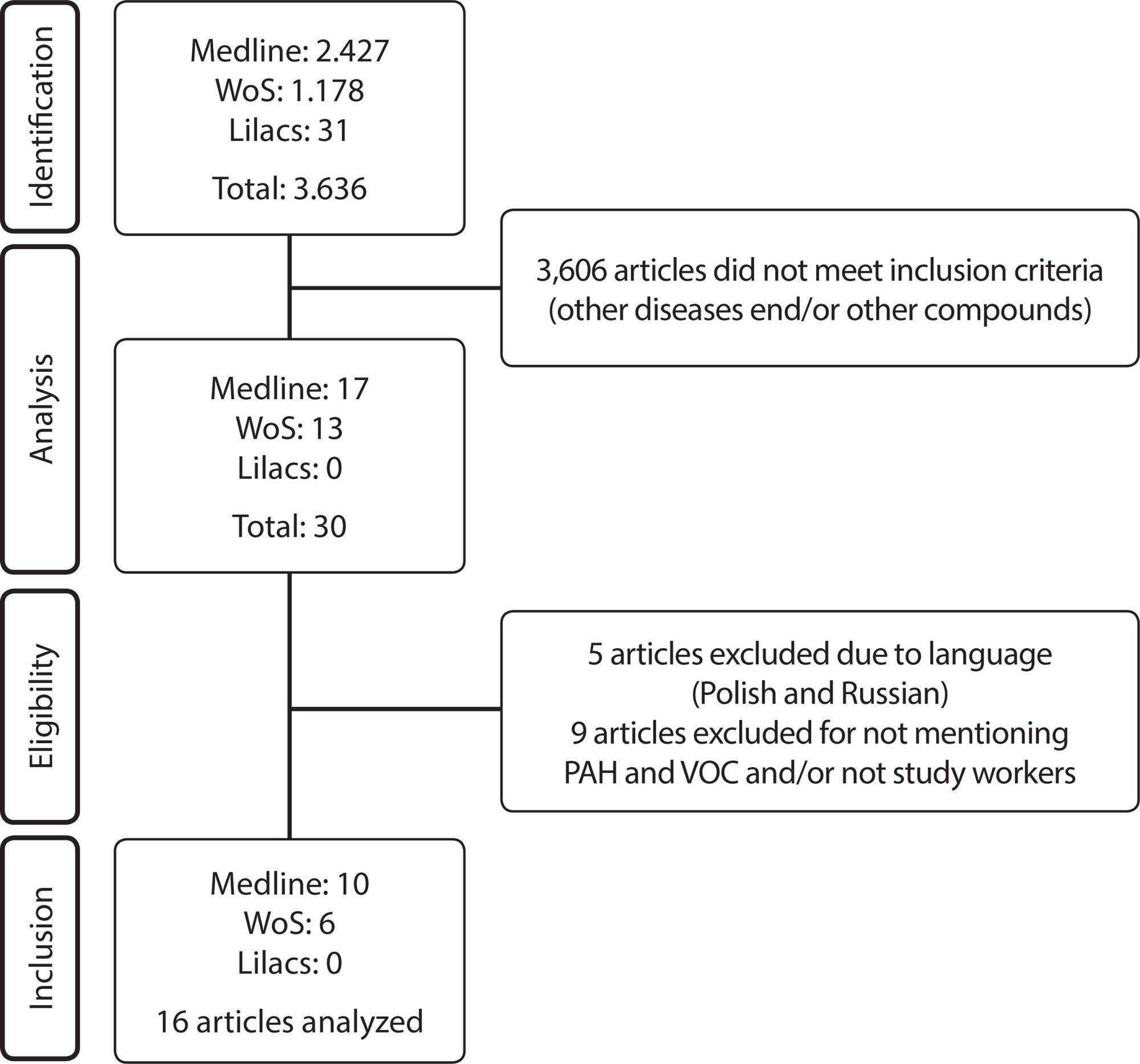
-
ARTÍCULO ORIGINAL23/10/2020
Building and validating an educational video for elderly individuals about fall risks
Revista Brasileira de Enfermagem. 2020;73:e20200010
Resumen
ARTÍCULO ORIGINALBuilding and validating an educational video for elderly individuals about fall risks
Revista Brasileira de Enfermagem. 2020;73:e20200010
DOI 10.1590/0034-7167-2020-0010
Visualizações0Ver maisABSTRACT
Objective:
to build and validate educational video for elderly individuals about fall risks.
Methods:
methodological study with video building. validated by 22 judges and assessed by 22 elderly individuals. Content was selected from the Fall Prevention Model and items from the Falls Risk Awareness Questionnaire. Items with an agreement greater than 0.80 were considered valid. verified through Content Validation Index (CVI) and binomial test.
Results:
building the video was guided by the Cognitive Theory of Multimedia Learning. Digital animation and audio narration were used. It lasted ten minutes and five seconds and included biological. socioeconomic. behavioral and environmental risks as well as precautions to avoid them. The CVI of judges had an average of 0.99. and of elderly individuals. an average of 1.0.
Conclusion:
the video was built and validated for content and understanding and can be used to prevent falls in elderly individuals.
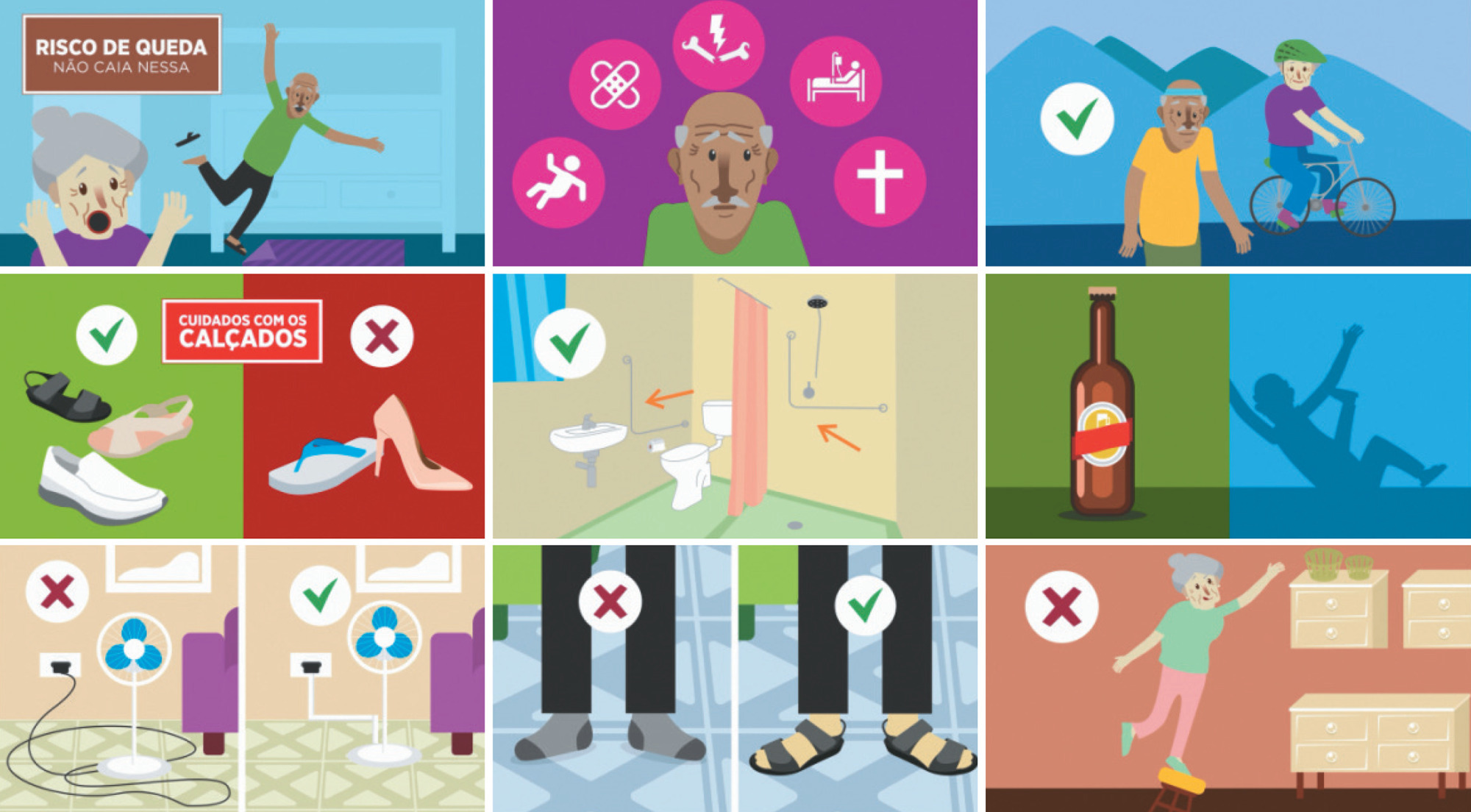
Búsqueda
Buscar en:
Nuvem de Tags
Adolescente (85) Atenção Primária à Saúde (239) COVID-19 (91) Criança (91) Cuidados de Enfermagem (269) Educação em Enfermagem (151) Educação em Saúde (139) Enfermagem (930) Enfermagem Pediátrica (86) Estudantes de Enfermagem (77) Estudos de Validação (131) Família (87) Idoso (208) Promoção da Saúde (99) Qualidade de Vida (104) Saúde do Trabalhador (86) Saúde Mental (145) Saúde Pública (82) Segurança do Paciente (150) Tecnologia Educacional (100)



